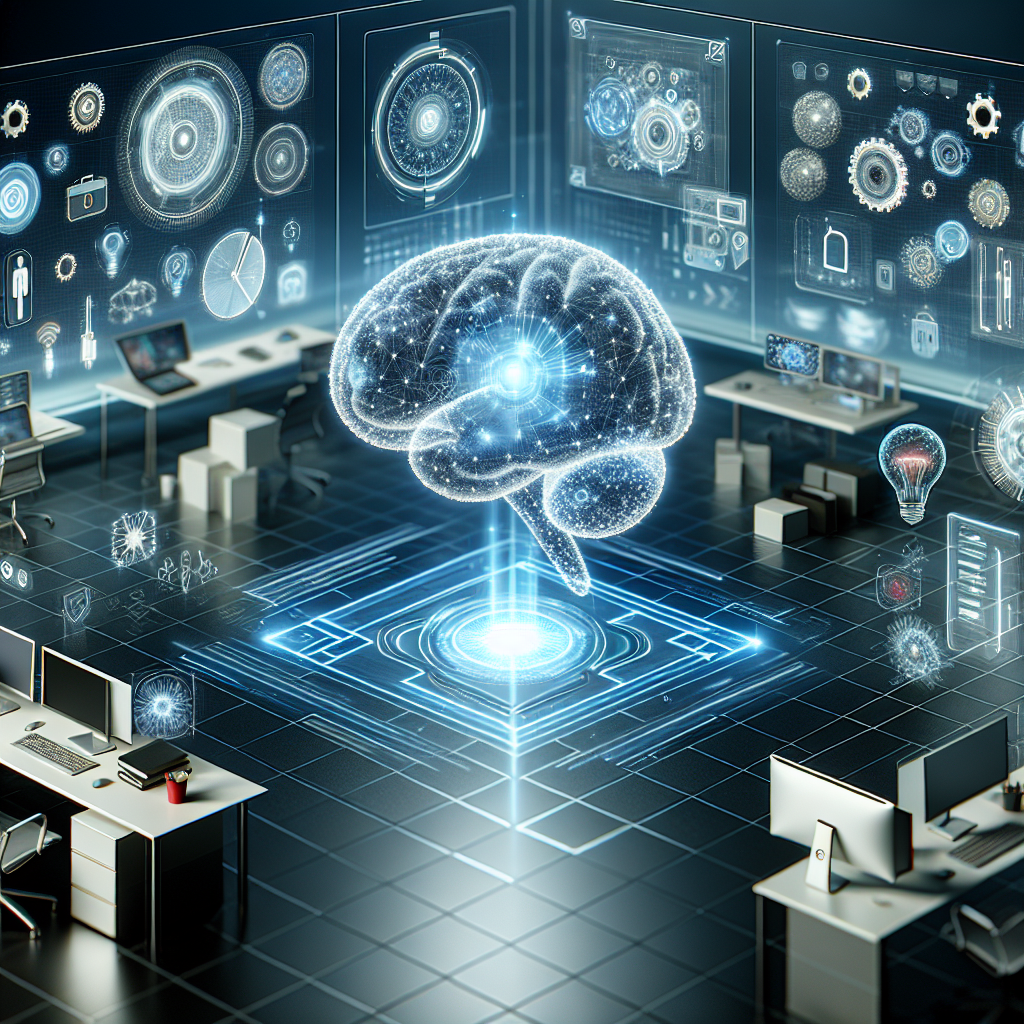Generative AI, also known as artificial intelligence, is a rapidly evolving technology that has the potential to revolutionize the way we work in the future. This technology is capable of creating new content, such as text, images, and even music, without direct human input. Generative AI has already made significant advancements in various industries, including marketing, healthcare, and entertainment. In this article, we will explore the impact of generative AI on the future of work and discuss how it is shaping the way we work and interact with technology.
Generative AI has the potential to dramatically change the way we work in the future. It has the ability to automate tasks that were once only possible through human labor, such as content creation, data analysis, and even customer service. This technology is already being used in a variety of industries to streamline processes, increase efficiency, and reduce costs. For example, in the marketing industry, generative AI is being used to create personalized content for customers, analyze data to improve targeting strategies, and even generate social media posts.
In the healthcare industry, generative AI is being used to analyze medical images, predict patient outcomes, and even assist in the development of new drugs. This technology has the potential to revolutionize the way we diagnose and treat diseases, ultimately saving lives and improving patient outcomes. In the entertainment industry, generative AI is being used to create music, art, and even virtual reality experiences. This technology has the potential to revolutionize the way we consume and interact with media, creating new opportunities for artists and creators.
Generative AI is also changing the way we interact with technology. With the rise of virtual assistants, such as Siri, Alexa, and Google Assistant, generative AI is becoming increasingly integrated into our daily lives. These virtual assistants are capable of understanding natural language, responding to queries, and even completing tasks on our behalf. As generative AI continues to advance, we can expect to see even more sophisticated virtual assistants that are capable of performing complex tasks and interacting with us in more human-like ways.
Despite the many benefits of generative AI, there are also concerns about its impact on the future of work. Some fear that this technology will lead to widespread job displacement, as machines become increasingly capable of performing tasks that were once done by humans. While it is true that generative AI has the potential to automate many tasks, it is also creating new opportunities for workers to learn new skills and adapt to a rapidly changing labor market.
One of the key challenges of generative AI is ensuring that it is used ethically and responsibly. As this technology becomes more widespread, there are concerns about issues such as data privacy, bias, and accountability. It is important for companies and policymakers to establish clear guidelines and regulations to ensure that generative AI is used in a way that benefits society as a whole.
In conclusion, generative AI has the potential to revolutionize the way we work in the future. This technology is already being used in a variety of industries to automate tasks, improve efficiency, and create new opportunities for workers. While there are concerns about the impact of generative AI on the future of work, it is important to approach this technology with a sense of optimism and openness to innovation. By embracing generative AI, we can create a future where humans and machines work together to achieve new heights of productivity and creativity.
FAQs:
Q: What is generative AI?
A: Generative AI is a type of artificial intelligence that is capable of creating new content, such as text, images, and music, without direct human input. This technology has the potential to revolutionize the way we work in the future by automating tasks that were once only possible through human labor.
Q: How is generative AI being used in different industries?
A: Generative AI is being used in a variety of industries, including marketing, healthcare, and entertainment. In the marketing industry, this technology is being used to create personalized content for customers and analyze data to improve targeting strategies. In the healthcare industry, generative AI is being used to analyze medical images, predict patient outcomes, and assist in the development of new drugs. In the entertainment industry, generative AI is being used to create music, art, and virtual reality experiences.
Q: What are the benefits of generative AI?
A: Generative AI has the potential to automate tasks, improve efficiency, and create new opportunities for workers. This technology can streamline processes, increase productivity, and reduce costs. Generative AI also has the potential to revolutionize the way we interact with technology, creating new opportunities for virtual assistants and other AI-powered tools.
Q: What are the concerns about generative AI?
A: Some of the concerns about generative AI include job displacement, data privacy, bias, and accountability. There are fears that this technology will lead to widespread job loss as machines become increasingly capable of performing tasks that were once done by humans. There are also concerns about issues such as data privacy and bias, as well as the need for clear guidelines and regulations to ensure that generative AI is used ethically and responsibly.
Q: How can we ensure that generative AI is used responsibly?
A: It is important for companies and policymakers to establish clear guidelines and regulations to ensure that generative AI is used in a way that benefits society as a whole. This includes addressing issues such as data privacy, bias, and accountability, as well as promoting transparency and ethical use of this technology. By approaching generative AI with a sense of responsibility and openness to innovation, we can create a future where humans and machines work together to achieve new heights of productivity and creativity.

